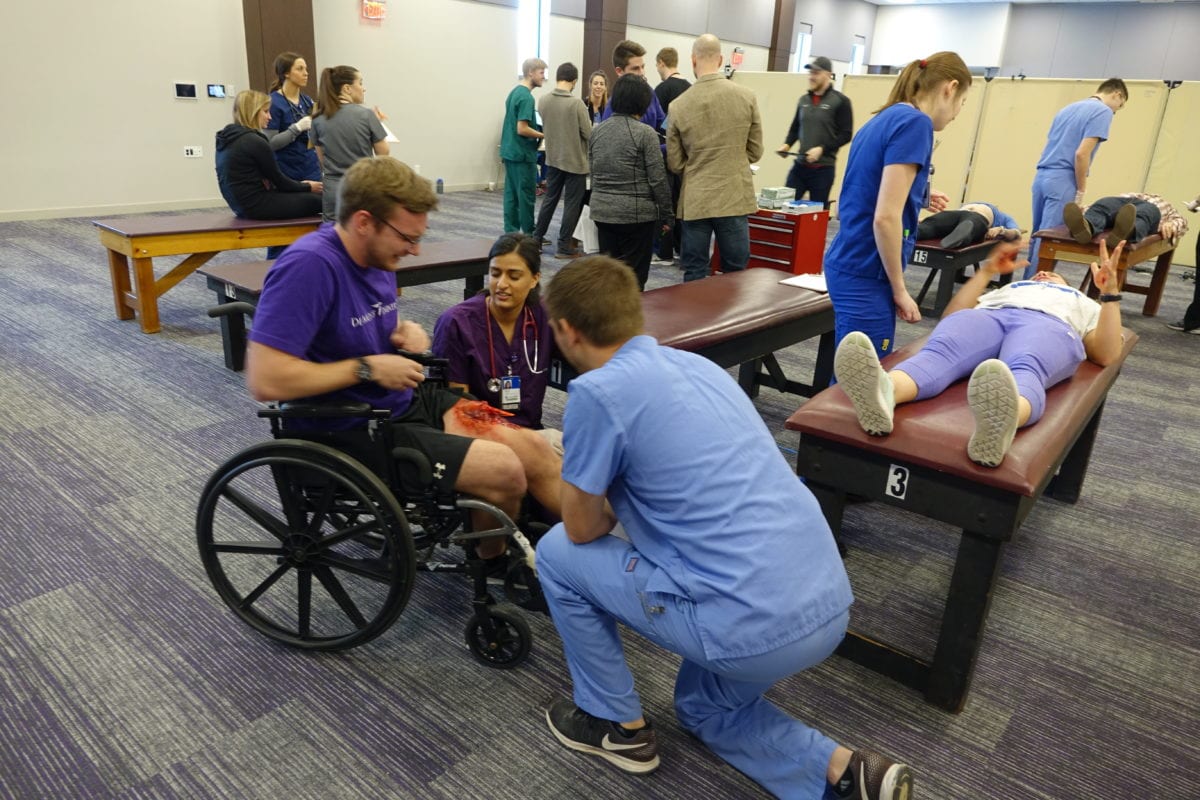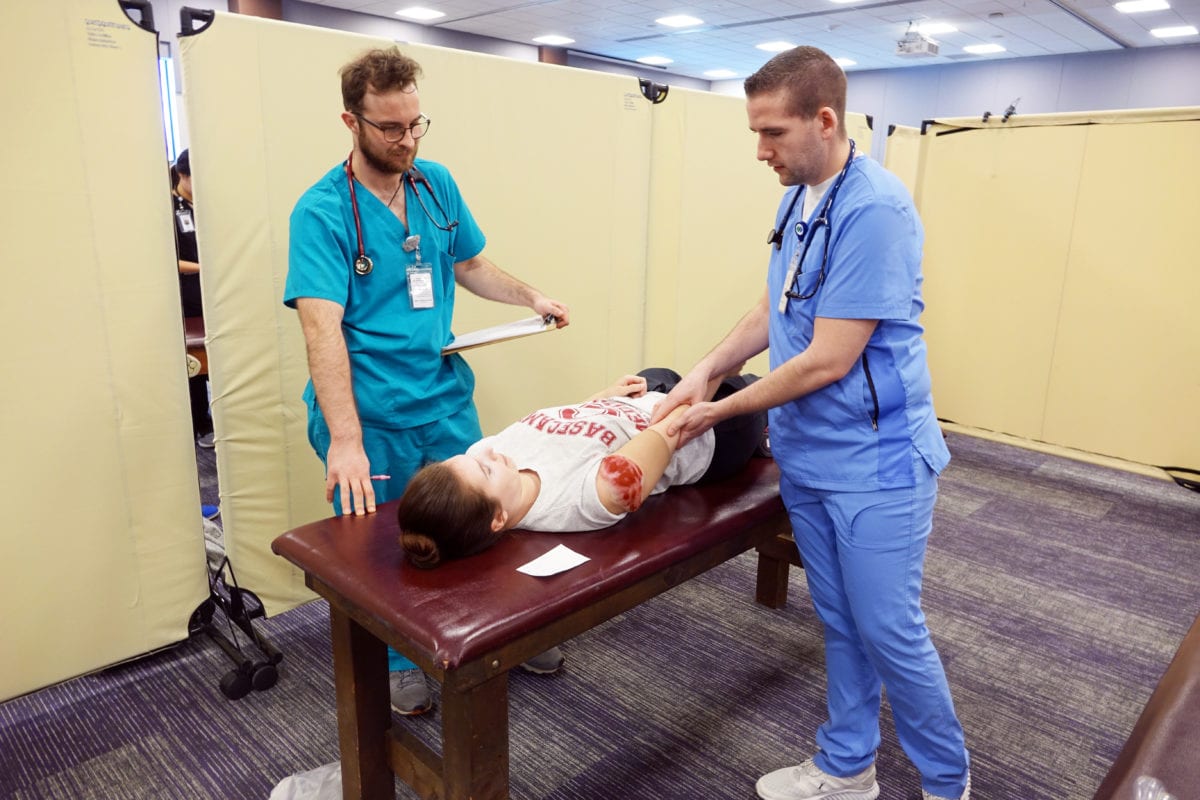The explosion of a gas station near Des Moines University’s campus tossed a recent Saturday morning into chaos. Gas station employees and others in the vicinity who suffered burns, broken bones and other serious injuries were transported to DMU’s Olsen Center for evaluation and treatment by multidisciplinary teams. Screams and moans of pain filled the air, the anxiety was palpable and emotions were on edge.

“If something happens to my brother, you people are going to be in big trouble!” barked one woman, adding to the charged atmosphere.

Except that the gas station had not exploded, and none of the injuries was real. They were the results of the moulage skills of DMU’s Simulation Center staff who had prepared a set of actors, including students and community members, to portray casualties for the mock disaster. Funded and organized by the American Medical Student Association, Emergency Medicine Club, Medical Humanities Society and the Student Government Association, the event was designed to give second-year students in the University’s osteopathic medicine and podiatric medicine programs and first-year students in the physician assistant program to work through the injury cases and get feedback from the clinical faculty.
“The goal of our drill was to immerse the students in a chaotic and fast-paced environment to help them learn to evaluate and think critically under pressure,” said John Dube, a second-year osteopathic medical student, secretary of the Emergency Medicine Club and a member of the 16-member planning committee who participated in a similar mock disaster last year. “We also wanted to ensure the students in the midst of chaos didn’t lose sight of our primary goal, the patient.”
During the event, students worked in groups of three or four, including a mix of D.O., D.P.M. and PA students, who were stationed as they would in the trauma bay of an emergency room. Participants included approximately 45 student providers, 60 patient actors portrayed by students and community members and nine supervising physicians.
After the drill, students debriefed with faculty. Joseph Thompson, a first-year physician assistant student who participated in the event, was struck by observations the faculty members shared about the students’ “immense teamwork” and “thorough examinations.”

“One of the professors said that, after working at many other universities, she had never in her life seen an event like this before. She encouraged students to grasp the true development of self and newfound relations within each individual program who took part in making up the trauma teams,” Joseph said. “What struck me personally was one of the faculty’s words: ‘Welcome to my life. This is my life every single day. While medicine is inconceivably fun and rewarding, what I saw today was something very unique. I saw the side of medicine that school, books and academia cannot give you. I saw the love for medicine that no one can take away from you. Don’t ever let anyone take away the fun or that joy for medicine.’”
Joseph added that the event gave students from different clinical programs the opportunity to “grow in an understanding of important ways we emphasize each other’s roles.”
“Today was a life-changing day for my career and for my heart as a whole, as I gained such respect and love for DMU, DMU faculty and the amazing people that make up this incredibly unique school environment,” he said.


